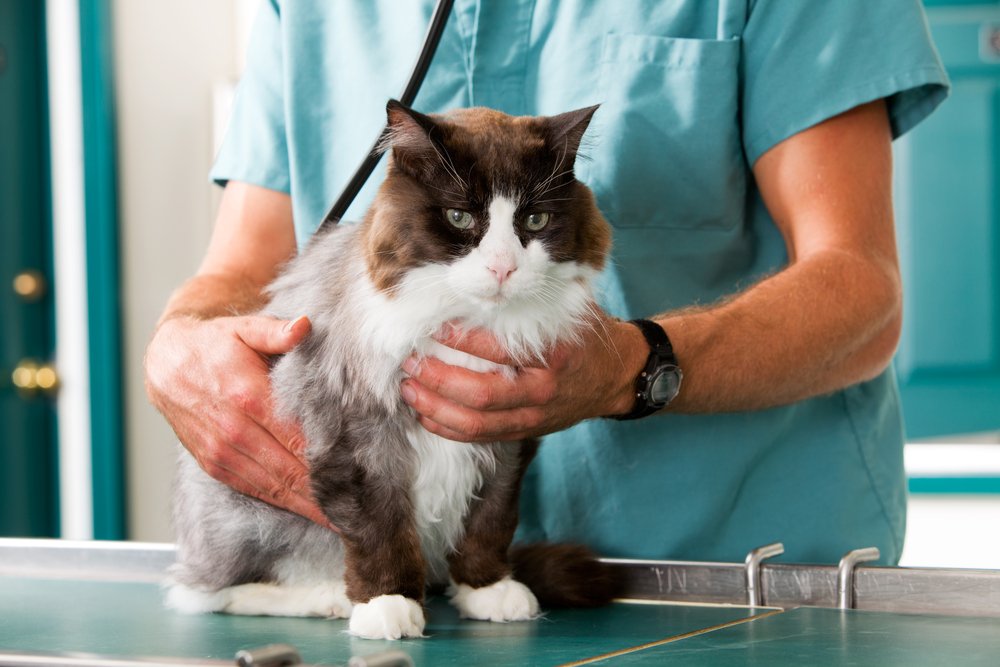Our feline companions are critical parts of our family, and their well-being one of our top concerns. Just as when a small child, significant other, or ourselves are not feeling well, these furry members of our family will have a sickness, injuries, and emergencies that arise from time to time. And the question in your mind is always the same; Should I take my cat to the vet right away?
Knowing when an actual feline emergency should have you rushing them to the nearest veterinarian facility and when something is an observable event to be treated at home is critical. Vets are expensive, don’t work around the clock, and like doctor’s visits, time-consuming. Often the same therapies they end up recommending for your feline might be nothing more than you could accomplish with time and patience at home.
Here is a quick guide for emergencies warranting immediate veterinarian intervention and tips for helping observe and treat your feline at home.
Table of Contents
Physical Injury vs. Illness
First off, a physical injury, of course, can be the most serious type of emergency for your cat. Please be aware that obvious lacerations, bleeding, or such outward signs of traumatic injuries should be immediately seen at a veterinarian clinic or hospital. Of course, ensuring you transport the feline in a manner that keeps them safe and as calm as possible will ensure no additional injuries occur and further aggravate the stress your feline is under.
Car accidents are the most serious of injuries that can happen to any animal and the leading cause of death in most pet types. Be sure they don’t have access to open roads, driveways, and pet doors that might trap them outside in the line of fire or machinery. Realizing that when such an accident does occur, time will be critical, and there is never really a moment to waste in seeking treatment. Physical injuries, though, might not always be this significant or caused by these big obvious factors.
Stressed animals due to family relocation, maybe a new pet in the household, a new baby’s arrival, or other such changes in their routine can lash out. Normally sweet cats can suddenly act like a menace when under stress and cause injury to other pets, themselves, or their humans. Remember, this behavior is their version of telling you what is bothering them, as they can’t verbalize, and it is important to listen and react. These dramatic behavior changes can include thrashing about when their humans try to pick them up, lashing out at caretakers causing them to protect themselves, jumping from items they wouldn’t normally, trying to escape from the home, and other interactions that can harm their well-being. Finding a quiet space, you stay calm even in the most trying of circumstances, and allowing for additional cuddle time, and support for your pet will be critical during stressful times. Many people forget how much stress and unfamiliar places can have on the behavior of a pet in the household. Injuries that might result from this type of situation may not need anything more than a cleaning and first aid at home.
Feline Health History is a Factor
Of course, as your feline’s primary caretaker, you are the best judge of when something is wrong with your pet. A normal docile cat that suddenly is aggressive, fighting with other pets in the household, and lashing out can sign something wrong. Like humans in pain, who can be angry, pensive, or experience huge mood swings, these can be the first indicator of something not right with your feline. Additionally, you will know your pet’s medical history, eating habits, and urination schedules better than even a professional vet as you live with them day in and day out. Should they start eating different, consuming huge amounts of water which is not normal, or experience concerns when going to the bathroom, all might be signs of a variety of concerns. If not seeming to be an immediate danger, the first step will be to document concerns and reach out to your Veterinarian.
Not every change in diet, exercise, or routine means an emergency. Cats can experience seasonal allergies or even reactions to something they ate out of normal. Maybe they have had a move or other situation that is causing them to not feel up to their typical activities. Unless there is something that screams emergency, these are all signs of something bothering your cat but may not denote an emergency – definitely contact your Veterinarian and seek a second opinion. Transporting a cat to a veterinarian can stress them out more or even cause them to get aggressive and aggravate a situation they might not have been serious about beginning with. Getting a second opinion in non-life-threatening situations via a phone call or virtual appointment is the best action course.
Cats Can Hide Illness & Injury
One emergency level concern that some cat owners might not be aware of with felines is heatstroke. Many cat owners don’t take cats in cars or confine them to hot spaces and thus don’t give this danger a thought. In the sweltering heat of summer, though, or for cats that are left to wander outside and could potentially get locked in sheds, garages, and other locations that could see temperatures rise at certain points of the day, this should be considered.
NEVER leave a cat confined someplace without access to water and adequate shade for any length of time. Secondly, remember second-hand dangers in your own house like a clothes dryer in which cats could become trapped, and keep the doors secured shut. A few additional contributing factors to a cat’s potential for heatstroke can be advanced age, overweight, existing medical conditions, and even the color of their coat (darker cots can trap heat close to the cat’s body).
Should your cat be caught up in a situation where you think heat stroke could have become a possibility to watch for lethargy, vomiting, panting, drooling, or sweaty feet (which is how cats sweat)? Immediately move them to a shady, cool spot and even place a cool, damp towel beneath them if they will tolerate it. If alert offer water in small doses, observe and consult your Veterinarian.
If the cat is disoriented, not alert, or continuously vomiting, immediately seek your feline’s medical attention. Remember to document times, amounts of water, and other factors as you administer support to your feline, as this will be critical should you not treat and need to have a veterinarian see them successfully.
Virtual vs. In-Person Vet Visits
Technology is an amazing tool that we have now available to help in emergencies, to best access a course of action. Many veterinarian clinics offer over the phone or even virtual visits to best assist in deciding if a visit to the office, a hospital, or home remedies is best in any given situation.
Be sure to document, observe and provide concise and on-point detailed descriptions of symptoms, circumstances that led to the emergency, and even your pet’s current condition. Emotions while running high can hurt medical cases to sidetrack the facts of your cat’s condition and even cause proper administration of aid to be delayed. A calm head will help get the right help for you to give your feline the attention they need but keep them calm and help to minimize stress reactions such as agitation, restlessness,
Here is a general list of when to consult a veterinarian virtually or by phone and when you need to be seen immediately:
Phone/Virtual – Access before visiting Veterinarian
- Heat Stroke suspected, but the feline is alert and taking small bits of water
- Won’t eat or overeating for a short period
- Change in urination or diarrhea (heavier or not going to the bathrooms)
- Suspected mild burns
- Aggressive behaviors
- Seasonal allergy symptoms
Go to a Vet Clinic or Hospital Immediately
- Automobile Accident – open wounds, injuries, or unconscious
- Severe allergic reaction – could include skin irritations, vomiting, diarrhea
- Breathing difficulties
- Seizures
- Poisoning
- Unconscious
- Signs of severe pain even without visibly injury
- Limbs suddenly dragging
Remember, you are your feline’s best advocate for their health and well-being. Knowing your cat’s habits and behavior is a good foundation to help provide notifications when something such as behavior, eating, or bathroom habits change and could indicate a medical situation.
Emergencies do not always warrant an immediate in-person visit to a veterinarian if the pet is conscious and not in major distress. Such things as heat stroke, overeating, stress behaviors, and other minor medical concerns can be made sores through the stress of transporting your feline, so be sure it is necessary. Phone calls and virtual visits are a great way to relay information about your current observations to best assist veterinarian staff in making the best decision on your cat’s care.
As always, you are the best person to advocate, educate care providers on your cat’s routines and notice when something is wrong. Seeking timely and the right care for your feline can make all the difference long-term for your feline, so being attentive and taking the proper steps to ensure the best outcome for all.

Jonathon Hyjek is an entrepreneur and cat-lover. He is married to Joy and they share their home with their 2 feline-friends, Franklin & Ollie. Jonathon is a self-admitted “Crazy Cat Guy”. He started this website because of his love for his own cats and their well-being.

